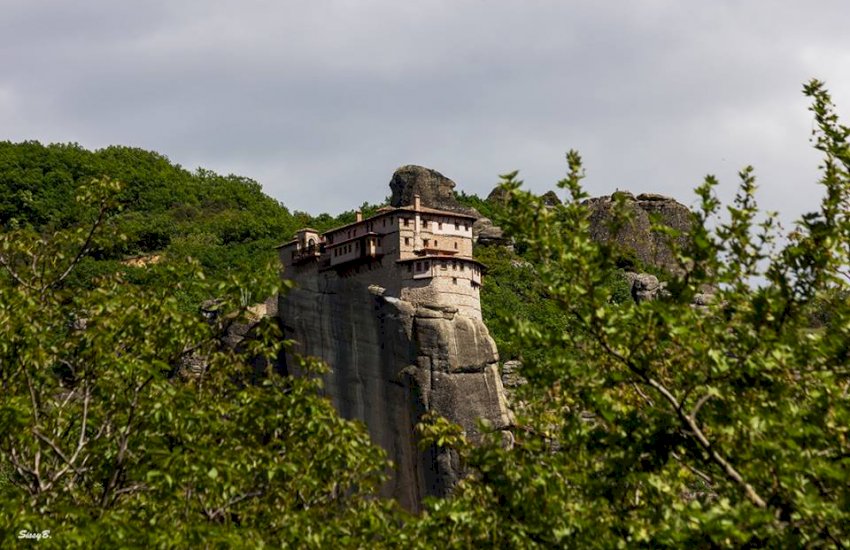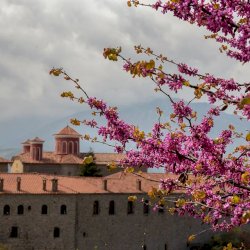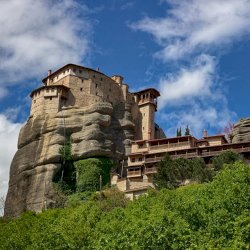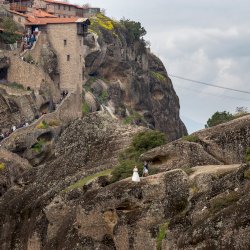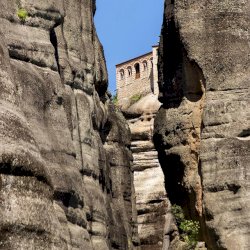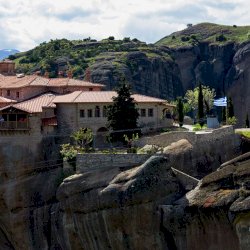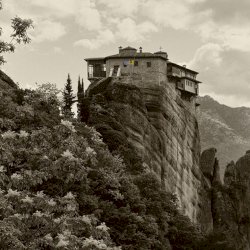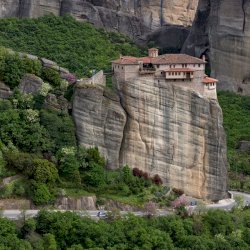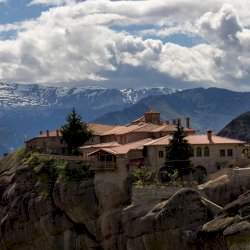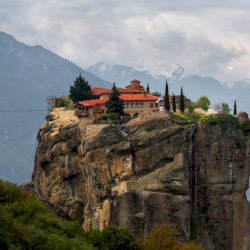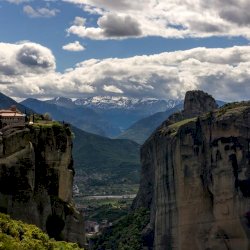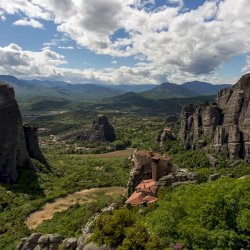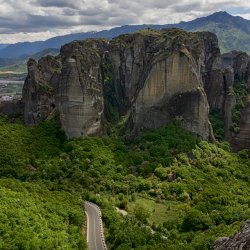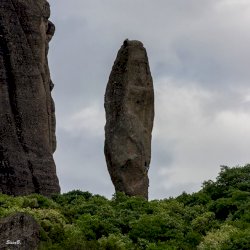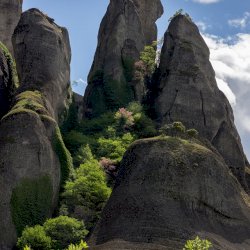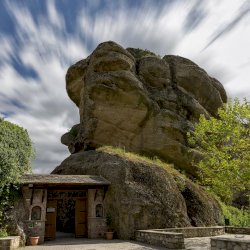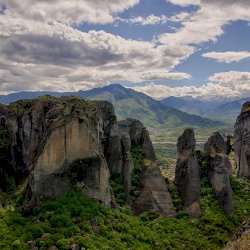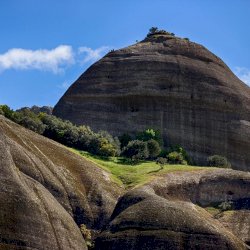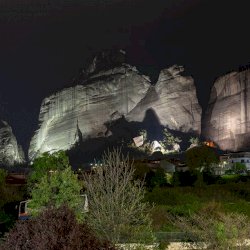Meteora - UNESCO World Heritage Site
Meteora
Meteora in Greek means ‘suspended in space’.
Meteora is an exquisite landscape offering the visitor a unique experience which combines architecture, history, nature, inspiration and spirituality.
Meteora monasteries are declared by UNESCO a World Heritage Site matching Byzantine architecture and natural beauty, contributing to the cultural heritage at local, national and international level.
The first hermits arrived according to tradition in the 9th century.
A monastic community on top of the cliffs was established by the first monks who arrived in the 11th century. They succeeded in achieving the almost impossible through faith. They gradually built 24 monasteries by lifting the materials up with their bare hands, nets and pulleys.
Today six monasteries are still functioning.
Three are the basic rules of monkhood that monks try to follow: purity, lack of property, obedience. They combine pray with work.
Meteora monasteries' contribution is great in many and different areas. Existing manuscripts and documents provide information with regards to ecclesiastic, tradition, history, geography, people.
The most important Meteora monasteries are:
· The Holy Monastery of Great Meteoron. The biggest, erected in the middle of 14th c . Today is a museum.· The Holy Monastery of Varlaam, built in 1541
· The Holy Monastery of Rousanou, founded in the middle of 16th c
· The Holy Monastery of St Nicholas, built in the beginning of 16th c
· The Holy Monastery of St Stephen, built in the middle of 16th c
· The Monastery of Holy Trinity, built in 1475
Visiting Meteora is a must!
Photo credits Sissy Bistola

